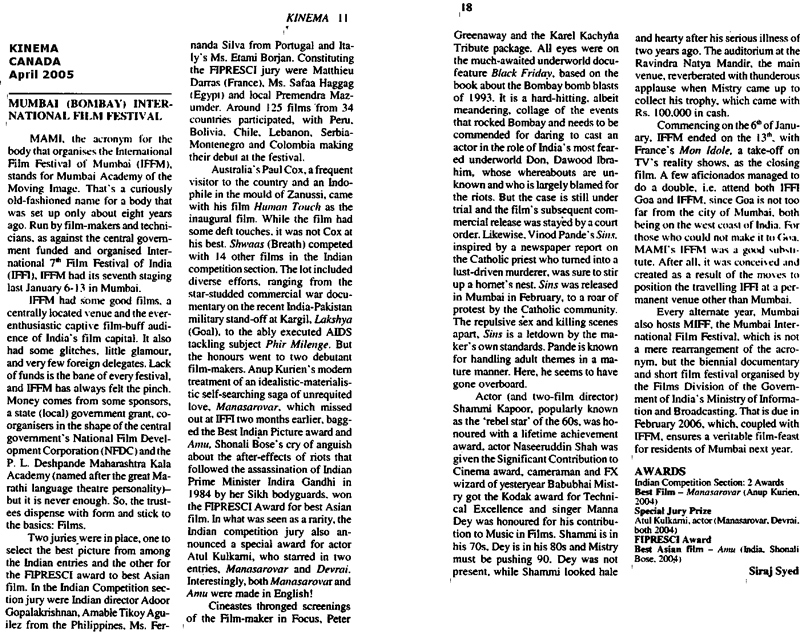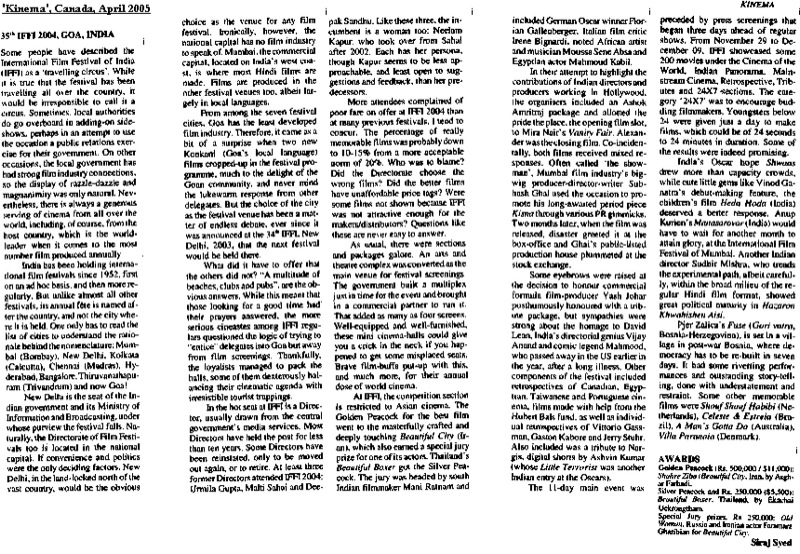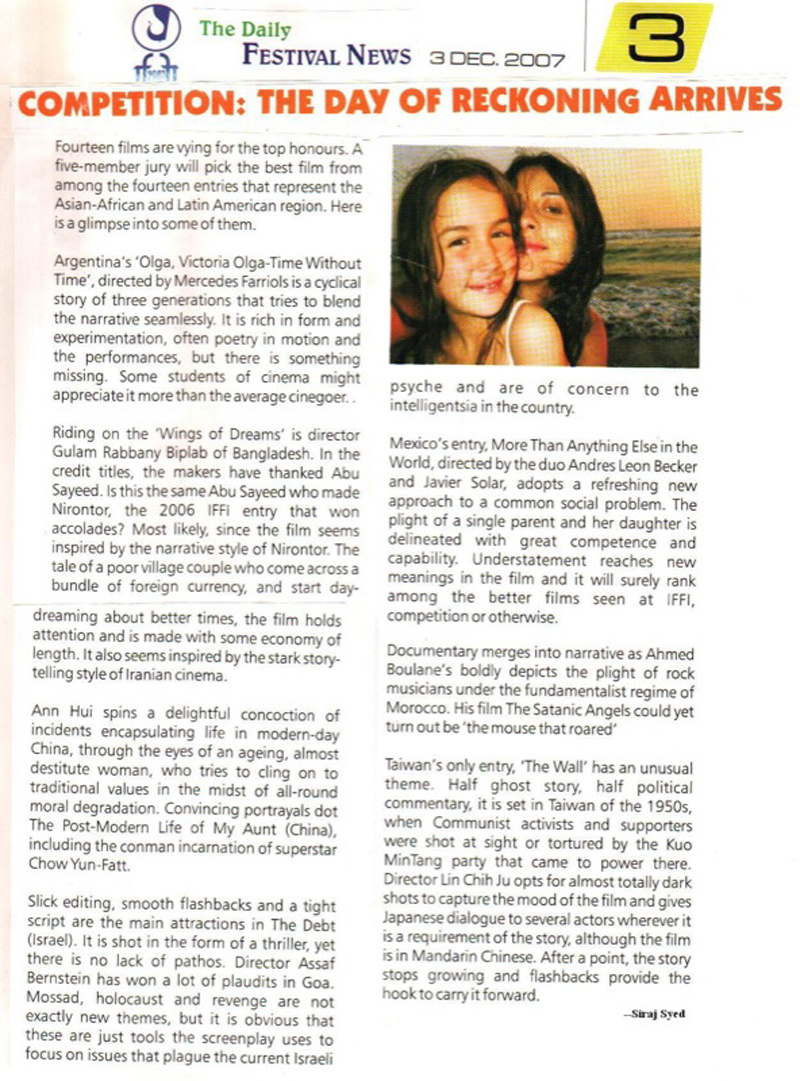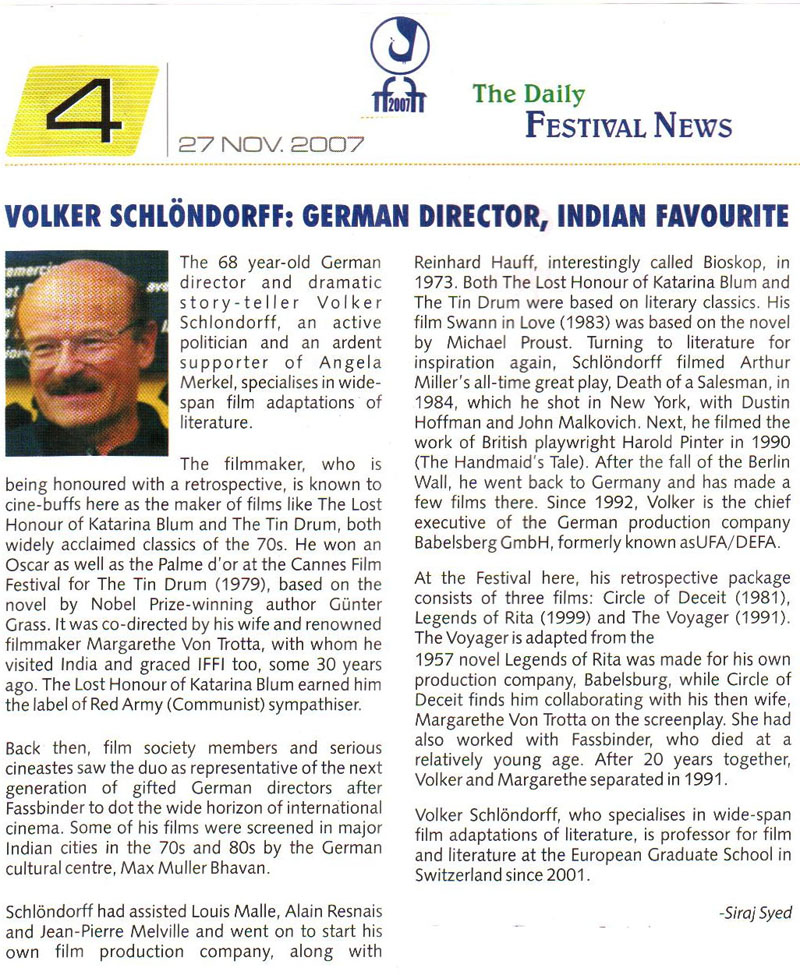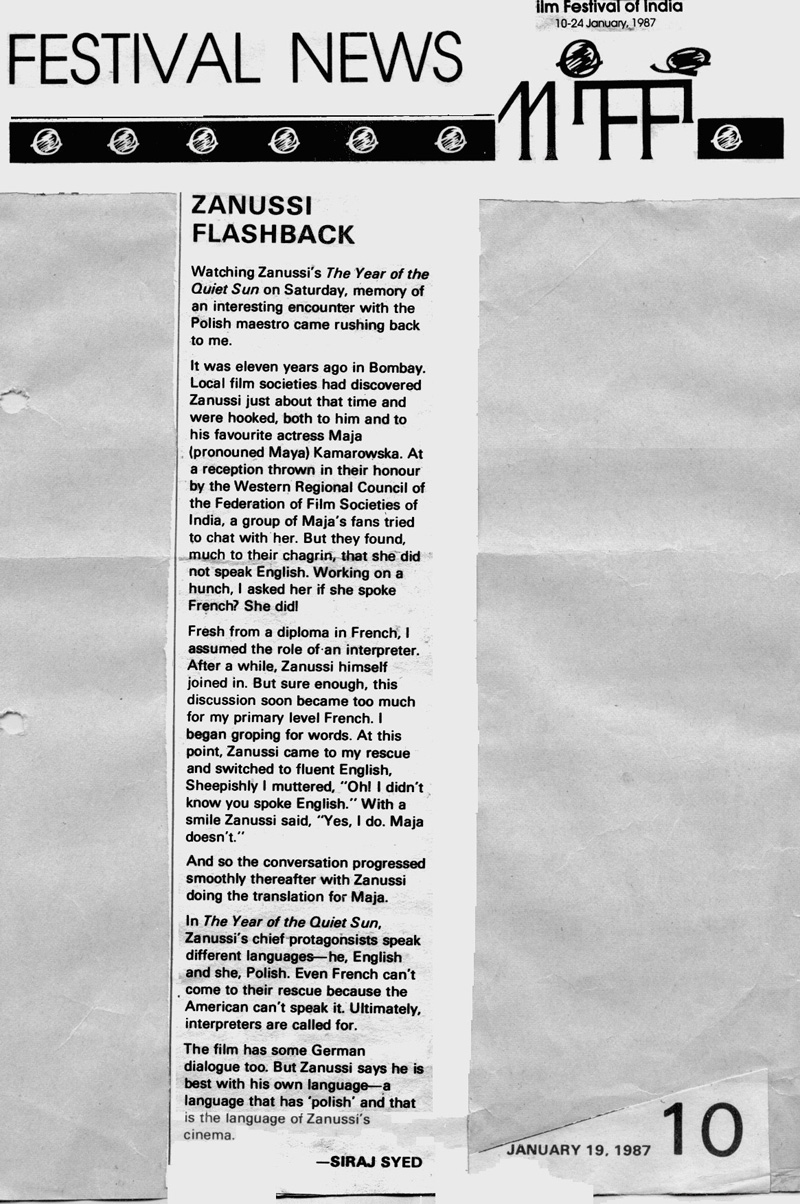|
|
||
|
Pro Tools
FILMFESTIVALS | 24/7 world wide coverageWelcome ! Enjoy the best of both worlds: Film & Festival News, exploring the best of the film festivals community. Launched in 1995, relentlessly connecting films to festivals, documenting and promoting festivals worldwide. Working on an upgrade soon. For collaboration, editorial contributions, or publicity, please send us an email here. User login |
The Grand Budapest Hotel, Review
The Grand Budapest Hotel Wes Anderson’s 8th feature film is inspired by the writings of Austrian writer Stefan Zweig (he admits to having “directly stolen” many ideas from Zweig’s works, as well as from his life). He pays tribute to Zweig in the credits, though he then takes co-credit for the film script. In terms of detail, scenic splendour, costumes, make-up and free-wheeling narrative, The Grand Budapest Hotel is an exciting experience. As a comedy, it falls short of expectations, the humour being too little to sustain. By the time you start going with the gags, the film is over. It works as a satire too. Here again, knowledgeable viewers might read different metaphors and parodies: war, migration, the funny/sexy British costume dramas of the late 60s-early 70s, the James Bond style chases on snowy peaks, ode to decadence, Agatha Christie (Zero’s love interest, Saoirse Ronan, is even named Agatha), Charlie Chaplin’s silent films, TV, rich v/s poor, and more. At the end of it all, are too many metaphors to assimilate and too little to laugh off. TGBH begins in 1985 with the aged author (Tom Wilkinson) recounting how he came to write the story, The Grand Budapest Hotel. Flash-back to August 1968, to the Republic of Zubrówka, a European alpine state (ŻZubrówka, incidentally, is a real-life brand of Polish vodka). The young author (Jude Law) has sought out the infamous and remote mountainside hotel to get over a bout of a scribe’s disease (writer’s block, anyone?). It is there that he meets Mr. Moustafa (F. Murray Abraham), the owner of the hotel, a multi-millionaire who prefers to sleep in a room the size of a large elevator. The real story of Mr. Moustafa begins in 1932, when he was known as Zero (Tony Revolori) and was the lobby boy and personal assistant to Monsieur Gustave H. (Ralph Fiennes), the hotel’s concierge, who has managed to keep the hotel bustling by providing pleasures to wealthy, old women. One of the women, 84 year-old Madame Desgoffe-und-Taxis (Tilda Swinton—Angela Lansbury was the original choice), name abbreviated to Madame D., is particularly smitten. Her love proves to be a problem when she is found dead in her mansion, under mysterious circumstances. Accusations of murder are directed at Gustave H., who is sent to jail, while Madame D.’s son Dmitri (Adrien Brody) and his henchman Jopling (Willem Dafoe) get rid of anyone who stands in the way of a handsome inheritance. But Gustave has an ace up his sleeve: the Secret Society of the Crossed Keys (Freemasons?) TGBH was shot entirely in Germany, in Berlin, and on location in Görlitz, a city on the German-Polish border. Shot by Robert Yeoman, TGBH is very much a film in keeping with his previous collaborations with director Wes Anderson: a storybook tale with complex narratives and first-person narrators, captured in an illustrative style that’s both theatrical and cinematic. Yeoman deserves due credit and photography is one element that stays with you after the show. Sequences set in the late 1970s, when the author addresses the camera from behind a desk (a painfully long voice-over), were filmed in 1.85:1, and scenes set in the 1960s were filmed in 2.40:1 anamorphic. Watching the film, one can guess the logic for this shifting of image dimensions, but is detracts from the viewing experience, instead of adding to it. Principal photography was strictly a single-camera affair, and Yeoman used an Arricam Studio. Anderson constantly encouraged Yeoman and key grip Sanjay Sami to find new ways to accomplish shots. A new addition to their toolkit was the Towercam, a telescoping camera platform from MAT in Berlin. The Towercam was occasionally used in place of a crane or to boom the camera between floors, as in the sequence where an incarcerated Gustave and his fellow inmates stage a prison break. When the lantern dropped through a hole in the jail-cell floor to the basement, they suspended the Towercam upside down so the camera could descend all the way to the ground. The Grand Budapest is first shown in a shabby state, its crumbling façade (a combination of locations in Görlitz, Germany, and miniatures shot at Babelsberg Studios) concealing an interior decked in flat shades of nicotine, with low ceilings and narrow halls. The cavernous atrium of a former department store in Görlitz served as the hotel’s main lobby. Wes Anderson (The Royal Tenenbaums, Fantastic Mr. Fox, Moonrise Kingdom) says his shoots are carefully planned and organised – until the actors come in, "and then it's just chaos.” What adds to the chaos in TGBH is the number of famous names with little to do, and you might be surprised to read in the titles at the end (or on the net) that the film also had Harvey Keitel, Jason Schwartzman, Edward Norton and Owen Wilson! All the actors acquit themselves well, particularly Mathieu Amalric and Willem Dafoe, but the focus is on Ralph Fiennes and Tony Revolori. Contextually, before he went to acting college, Ralph Fiennes worked as House Porter in Brown’s Hotel London, an old, well-known Mayfair hotel. He reminisces, “There were two of us and we had white coats and were the lowest of the low. I remember I had to take Jack Palance’s suitcases to his car. He made me stand and wait as he fastidiously counted his English coins into the palm of my hand, which I found a bit humiliating. And I remember Leonard Nimoy walking underneath me as I cleaned some windows.” It’s a crisp, natural performance from him, perhaps a little too easily done. Anthony ‘Tony’ Quinonez Revolori, 18, who is of Guatemalan heritage and grew up in Anaheim, has been acting since he was two, bagging roles in TV series. During weekly bowling excursions, Revolori learned that F. Murray Abraham, the 74-year-old Academy Award-winning actor who portrays the older Zero with flair, easily had the best arm. Revolori said the Anderson likes to do 30 or 40 takes of each scene -- which worked against him one day when they were filming a scene where Zero is slapped by Keitel. "Harvey Keitel slapped me about 42 times," he said, groaning. "And Harvey Keitel is an ex-marine so he doesn't play around." Was worth it, Tony! You have a meaty role and your dead-pan delivery goes so much with the character. Maybe you need to work on your diction a bit. Yes, you are playing an immigrant, but it’s the clarity I am talking about, not the accent. Tilda Swinton is 54 in real-life. Born Katherine Matilda Swinton to a Scottish father and Australian mother, the red-head is 5’11” tall. She went to school with Princess Diana. Her films include Snowpiercer, Moonrise Kingdom, Limits of Control and The Curious Case of Benjamin Button. Her make-up is incredible and the lipstick nothing less than 70mm! Brevity of the role might have prompted Angela Lansbury to say nay. If you watch it in a neutral frame of mind, without being coloured with the names associated with the Grand project, you might find your brief stay at the Budapest Hotel more rewarding. Rating: *** Trailer: http://www.youtube.com/watch?v=1Fg5iWmQjwk 22.07.2014 | Siraj Syed's blog Cat. : Ralph Fiennes The Grand Budapest is a three-star Hotel wes anderson Hollywood
|
LinksThe Bulletin Board > The Bulletin Board Blog Following News Interview with EFM (Berlin) Director
Interview with IFTA Chairman (AFM)
Interview with Cannes Marche du Film Director
Filmfestivals.com dailies live coverage from > Live from India
Useful links for the indies: > Big files transfer
+ SUBSCRIBE to the weekly Newsletter Deals+ Special offers and discounts from filmfestivals.com Selected fun offers
> Bonus Casino
User imagesAbout Siraj Syed Syed Siraj Syed Siraj (Siraj Associates) Siraj Syed is a film-critic since 1970 and a Former President of the Freelance Film Journalists' Combine of India.He is the India Correspondent of FilmFestivals.com and a member of FIPRESCI, the international Federation of Film Critics, Munich, GermanySiraj Syed has contributed over 1,015 articles on cinema, international film festivals, conventions, exhibitions, etc., most recently, at IFFI (Goa), MIFF (Mumbai), MFF/MAMI (Mumbai) and CommunicAsia (Singapore). He often edits film festival daily bulletins.He is also an actor and a dubbing artiste. Further, he has been teaching media, acting and dubbing at over 30 institutes in India and Singapore, since 1984.View my profile Send me a message The EditorUser contributions |



















